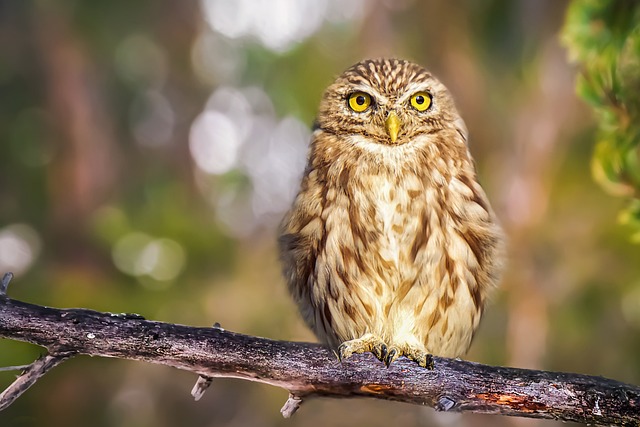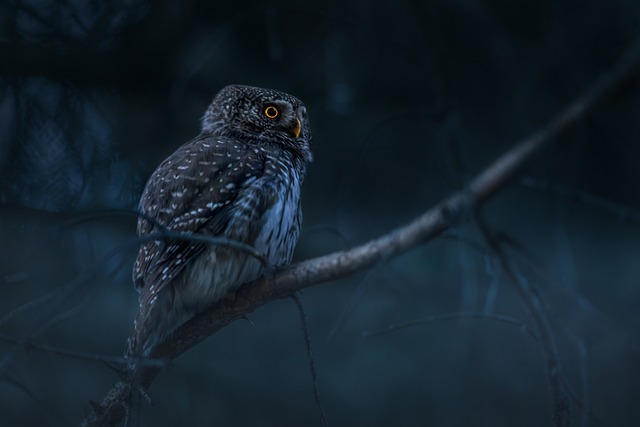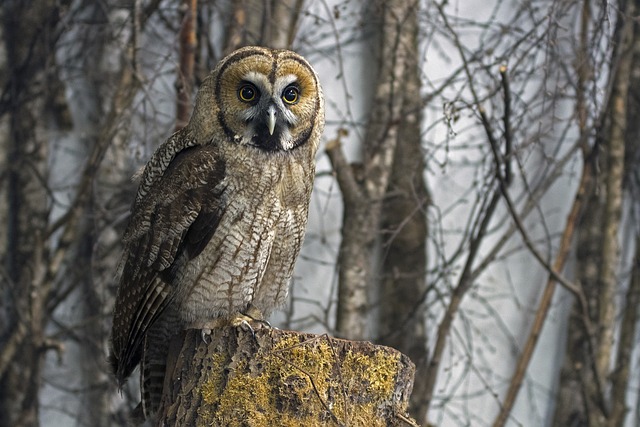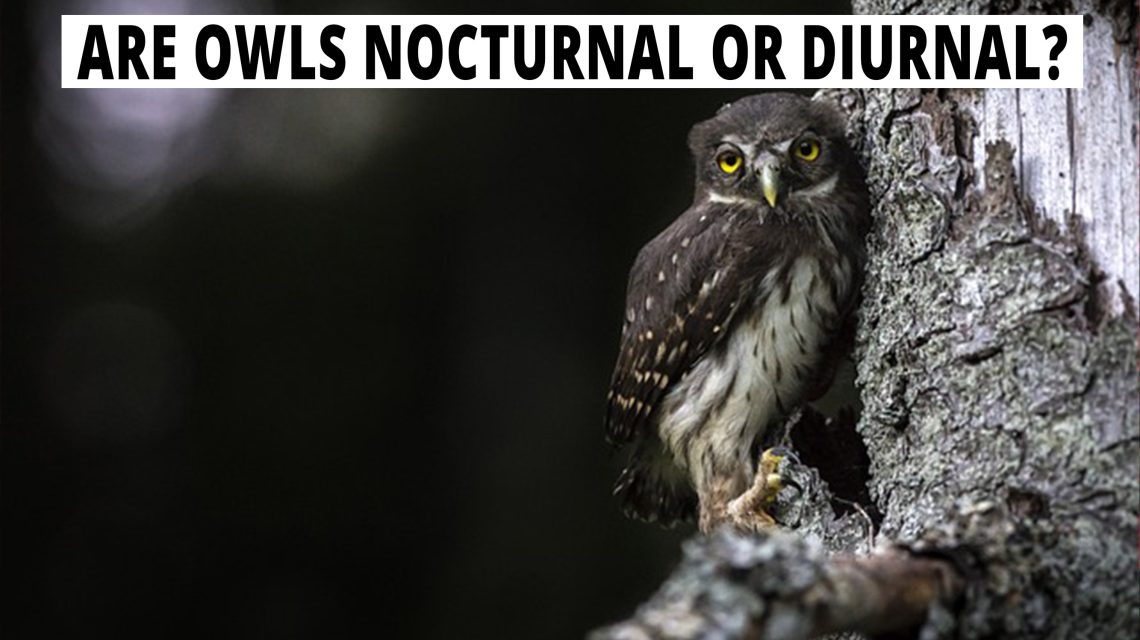Owls are typical birds that can be found in any environment of the world. Around 250 species of owl live in the world; each species differs by size and environmental conditions. The owls belong to the bird group Strigiformes. There are two family types that we can find between owls; they are Tytonidae and Strigidae.
Appearance
As we have mentioned above, there are variations in the appearance of owl species. In general, the owls have round faces and stocky bodies in common, but the collaboration, size and patterns are different. The hooked beaks and sharp talons make them good raptors. The owls are also considered efficient and skilled hunters like the other hunting birds.
Diet and Appearance
The diet of the owls also formed as same as other hunting birds. The diet of owls included fish, insects, and birds. These are giant owls that hunt foxes and deer. The owls hunt primarily at night, but sometimes they hunt in the daytime as well. The owls have good Vision, like humans in the nighttime. They can have good Vision with the trait of their eyes, but they can not move the eyes; instead, they twist their neck to find directions and obstacles. The owl can rotate its neck up to 270 degrees. The owls can scan the prey from the above habitats and silently fly down to catch it.
The owl’s feathers are formed softly so that it will not n make any noise when it flies to catch a pretty from the above perch; therefore, it can catch its prey silently. The owls also swallow the meat because they are the same as the other birds; they are toothless.

Behaviour and reproduction
The resting of the owl is called rootsy. The owls roost in the shady trees; they perch on the branches, and some roost inside tree cavities, in barns and roof timbers. During mating, the male owls call for the female owls by vocalising. Usually, the mating season of owls starts in winter. The male owls are good at wooing the female owls before mating; they do chest fluffing, make aerial dances and gift the females food. The mating is done once a year. A female owl can lay 14b 3ggs at one time, but the number differs according to the species and the amount of food the female owl gets during the gestation period. The baby owls are called “nestlings” or “owlets”.The habitat for the owlets becomes new nests, abandoned nests or tree cavities; the baby owls are looked after by their parents. The male owls go hunting and bring food for the female ones, and to the owlets and both parents look after the owlets until they become young. Within twelve weeks of birth, an owlet got from the nest and became independent.
Threats
Due to many human involvement activities, most owls have lost their habitats. Humans destroy their habits through agricultural and industrial activities. The shortage of food and the climatic changes also cause the population of owls too. The IUCN(International Union of Conservation of Nature) has listed 12 species of owls that are endangered.

Are owls Nocturnal or Diurnal?
There is a traditional belief that owls are Nocturnal, but that is not the exact truth because some species of owls are day hunters. Those day hunter owls are more active during the day than at night. According to the sleeping patterns of owls, we can find the nocturnal and diurnal differences between owl species referring to their behaviours.
– The sleeping behaviour
Many owl species sleep during the daytime and go hunting at night; those species are called nocturnal owls. Examples of such nocturnal owls are the Elf owl, Spotted owl, Greate horned owl, Long-eared owl, Flammulated owl, Barn owl, Boreal owl, Nothern saw-whet owl, Whiskered screech owl, Western Screech-owl and Eastern screech owl. There are 69% of owls are nocturnal. An owl sleeps for ten to twelve hours a day. From all the species of owls, it has been estimated that 3% of owls are diurnal.
Also, there are diurnal owls that sleep at night and go hunting during the day. Burrowing owls, the Northern hawk owl and the Snowy owl, are examples of such diurnal species. Some species of owls are either nocturnal or diurnal; such species are called Cathemerals, Barred owls, Short-eared owls, Nothern pygmy owls, and Great grey owls are some of them. The owls always prefer solitude, but they sleep as a group, especially the nocturnal owls sleep as a group during the breeding season, winter. Since the nocturnal owls go hunting during the night, they have good Vision and excellent hearing ability. The Nocturnals owls’ hearing sense is ten times superior to that of humans. As an exceptional ability to find prey, they use their sense of hearing to locate the target. They can detect the slightest sound. The structure of their face also helps them to grab the auditory movements excellently. When talking about the Vision of nocturnal owls, they have large pupils to collect light during the nighttime. The owl’s Vision can only be similar to a cat’s Vision; their sight is the same as binoculars. Though they have clear Vision, they can not move their eyes as they are flattened to the face. Therefore, owls need to rotate their head to have a clear vision of the things behind them. The head of the owls formed according to that; an owl can turn its head up to 270 degrees.

Who are Crepuscular owls?
Of all the species of owls, there are 22% of owls that belongs to the category of Crepuscular owls. The Cerpusular owls have orange eyes, and they do not come out when it is fully light. The Crepuscular owls go hunting during dusk and dawn.
Most owls are Nocturnal; they spend the day sleeping and actively move during the night. According to the research done on nocturnal, diurnal and crepuscular owls, it has been identified that the nocturnal owls have dark eyes, the diurnal owls have yellow eyes, and the crepuscular owls have orange eyes according to their behavioural patterns.


